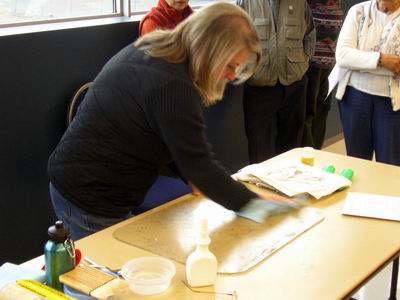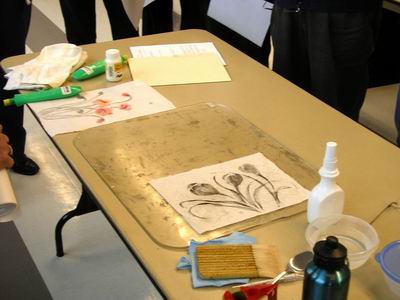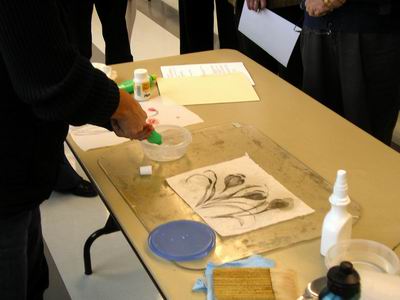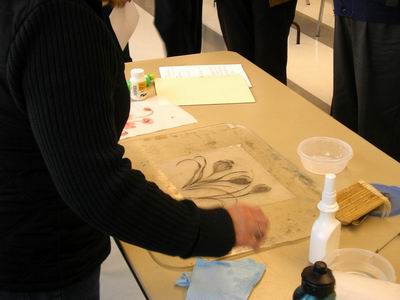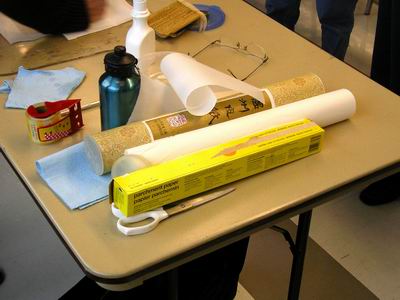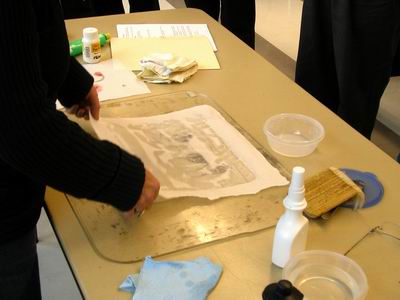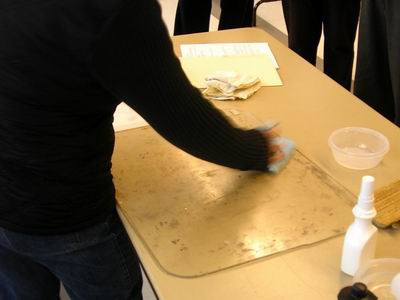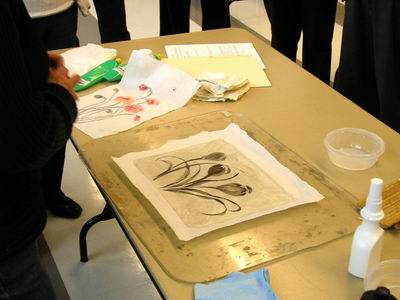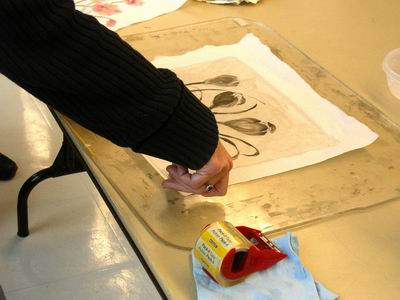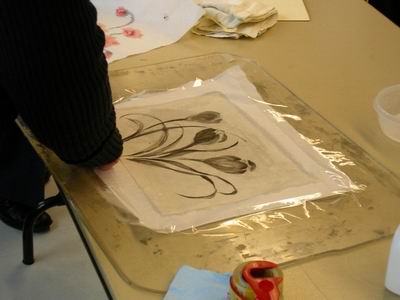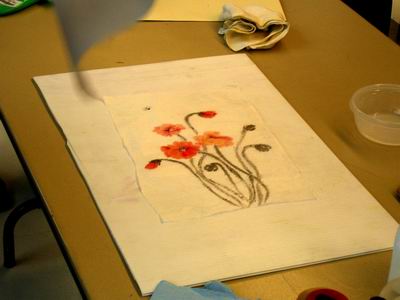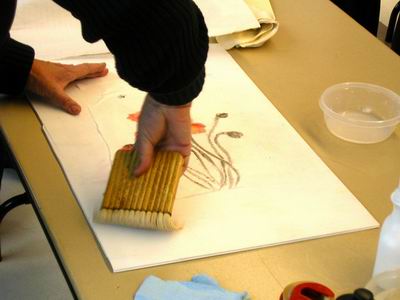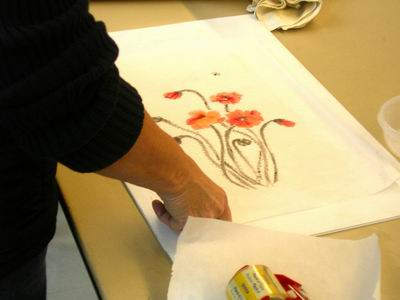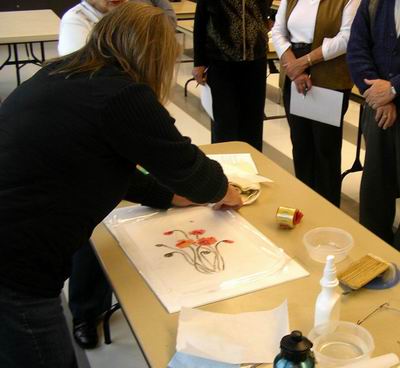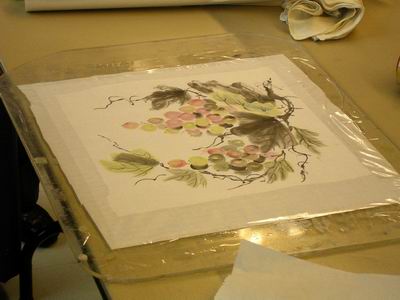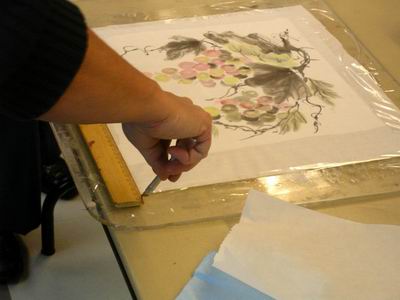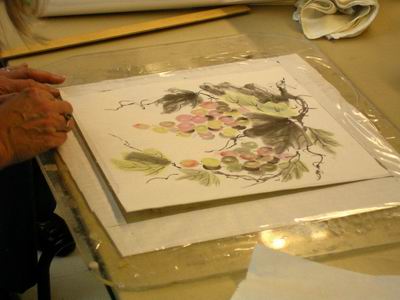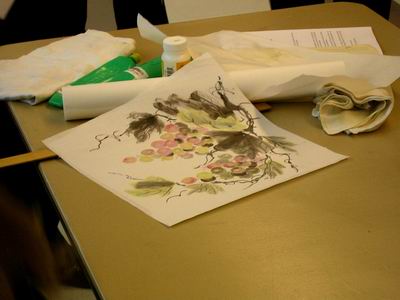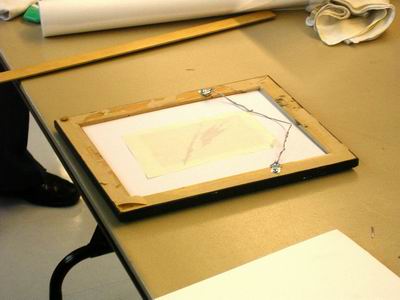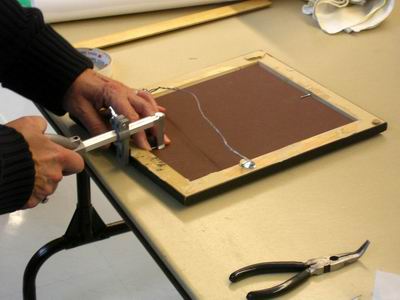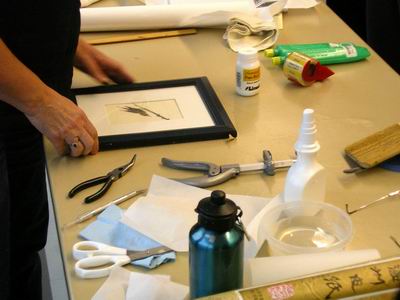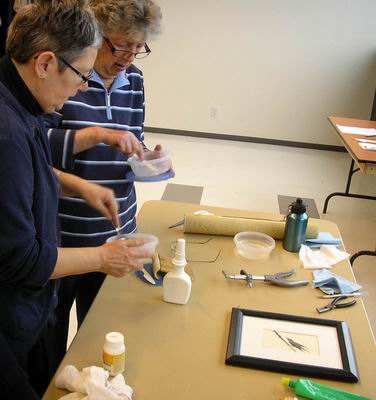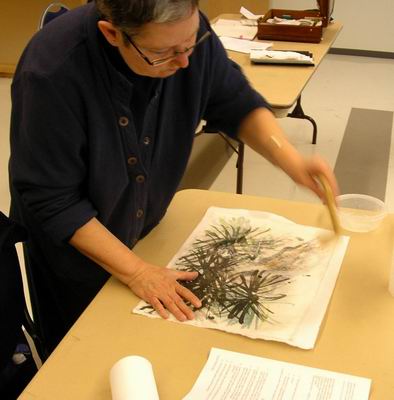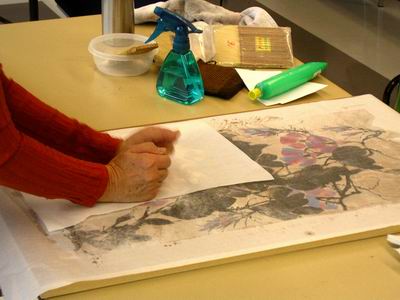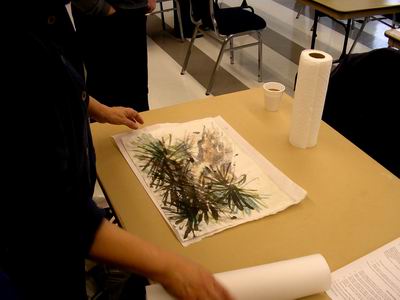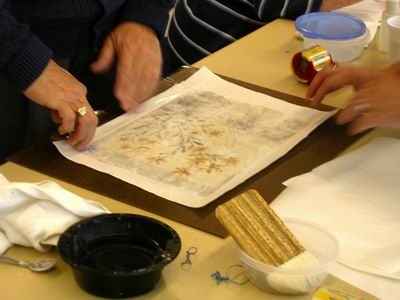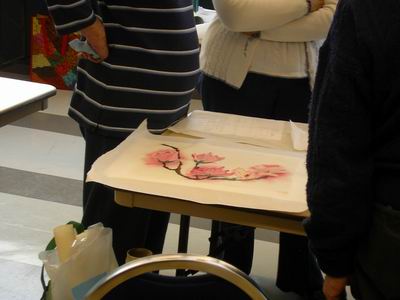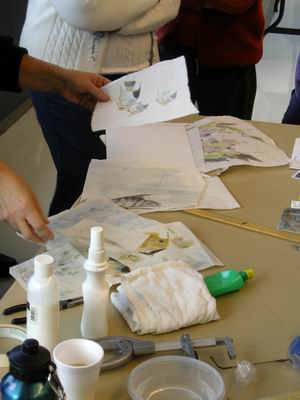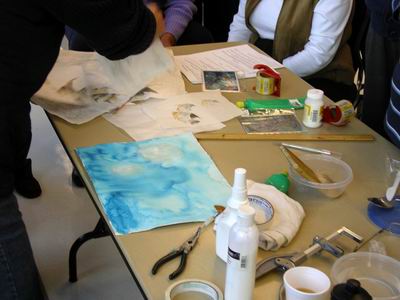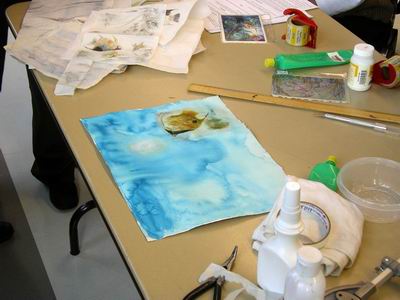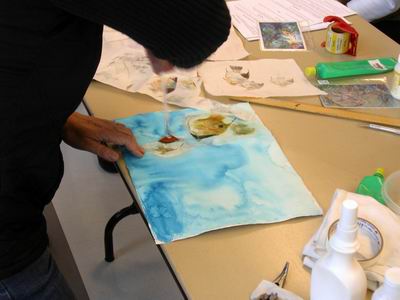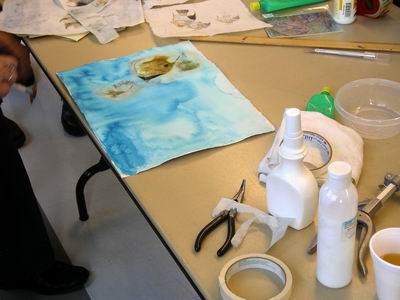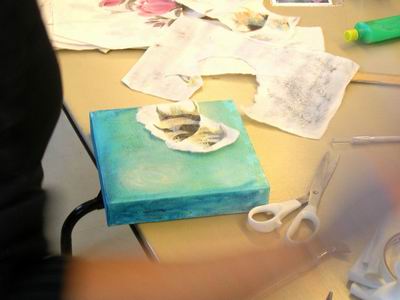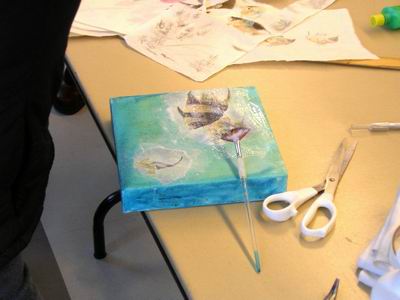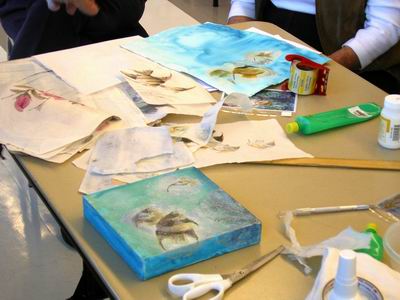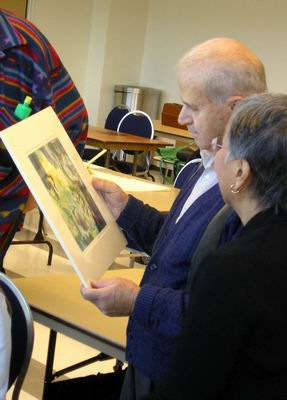Mounting Paintings with Diana Bullock - November 14th, 2009
One of the most practical things you can learn as an artist is to wet mount your own paintings. Not only can you save some money, but you are assured the mounting is done right. Once you learn how, you can apply the knowledge to all your future paintings.
Diana Bullock has been mounting paintings for several years and has learned what you need to do and what you need to avoid. Diana began her workshop on wet mounting by thoroughly cleaning the surface she would work on.
Diana lightly sprayed the ink only work that she would initially work with. The work was placed face down. The painting, if ink only, should have been dry for 24 hours; if colour, it should have been dry for 48 hours.
Next the paste was prepared with rice glue and water.
Using a flat, wide brush, Diana Bullock spread the paste over the back of the painting, working from the inside to the edges. Then she carefully removed the paste that had spread onto the surface itself.
The rice paper that the painting will be mounted on was placed next on the back of the painting. It must be acid free. Then parchment paper was placed over the rice paper.
The rice paper was for the backing of the painting. The parchment paper was used to rub the paste and check it was applied evenly.
Once finished, Diana removed the painting and cleaned the surface again.
The painting was flipped over; that is, placed right side up.
Then the edges were taped with packing tape.
All edges of the painting were taped. At this point the painting would be left to dry for 24 hours.
Diana Bullock then turned to a coloured painting, which follows a similar process but requires more care. The rule for colour that must be observed is that it needs extra time to dry before mounting as otherwise colour can run when the paste is added.
Again, the paste was applied.
The rice paper for backing the painting and parchment paper were used as before.
The tape was added to the edges.
At this point the painting would be left to dry. To show the workshop participants what they would do afterwards, Diana worked with a dry painting.
Using a ruler, the edges were cut.
Then the wet mounted painting was lifted from where it had been drying.
The wet mounted painting was ready to be framed.
The wet mounted painting was taped onto the back of the frame with acid free tape.
The back of the frame was added and a special tool was used to add nails to hold the back of the frame. You can get this tool at Lee Valley tools.
Then the wet mounting was finished and looked quite professional.
It was our turn. But we could take a break and have tea and cake courtesty of Linda Nakatsu and Dianne Kitazaki. In case we might miss a step, Diana provided instructions on wet mounting for us. The first step was mixing the paste.
Next, workshop participants applied the paste with the wide brush.
The parchment paper was used to even out the paste.
Then the paintings were flipped over and the paintings were ready for the taping of the edges.
The tape was used on all the edges as Diana had advised.
Colour paintings required special care as they can bleed. However, sometimes that bleeding can create a special effect that softens the subject.
As the workshop participants' paintings were drying, Diana Bullock showed us some tips we could use related to wet mounting. Many times we have odds and ends of works that could be reused if we could join them somehow.
Using one painting that had a blue background and some fish that were in another painting, Diana tore the fish from the second painting.
She then placed the fish on the blue backgound painting and applied the paste to the fish.
Diana continued and added more fish to the painting with the blue background.
The result as the paste dried was a painting with subjects that appeared to have been painted at the same time.
The technique can be used on canvas too.
In this case a medium matte chemical is used.
Once it starts to dry, the fish appear as part of the canvas.
Looking at a dried painting with this technique, the added pieces were indistinguishable from the painting they were added to.
We headed home with our mounted paintings to dry out and inspired to begin wet mounting our own paintings in the future.
